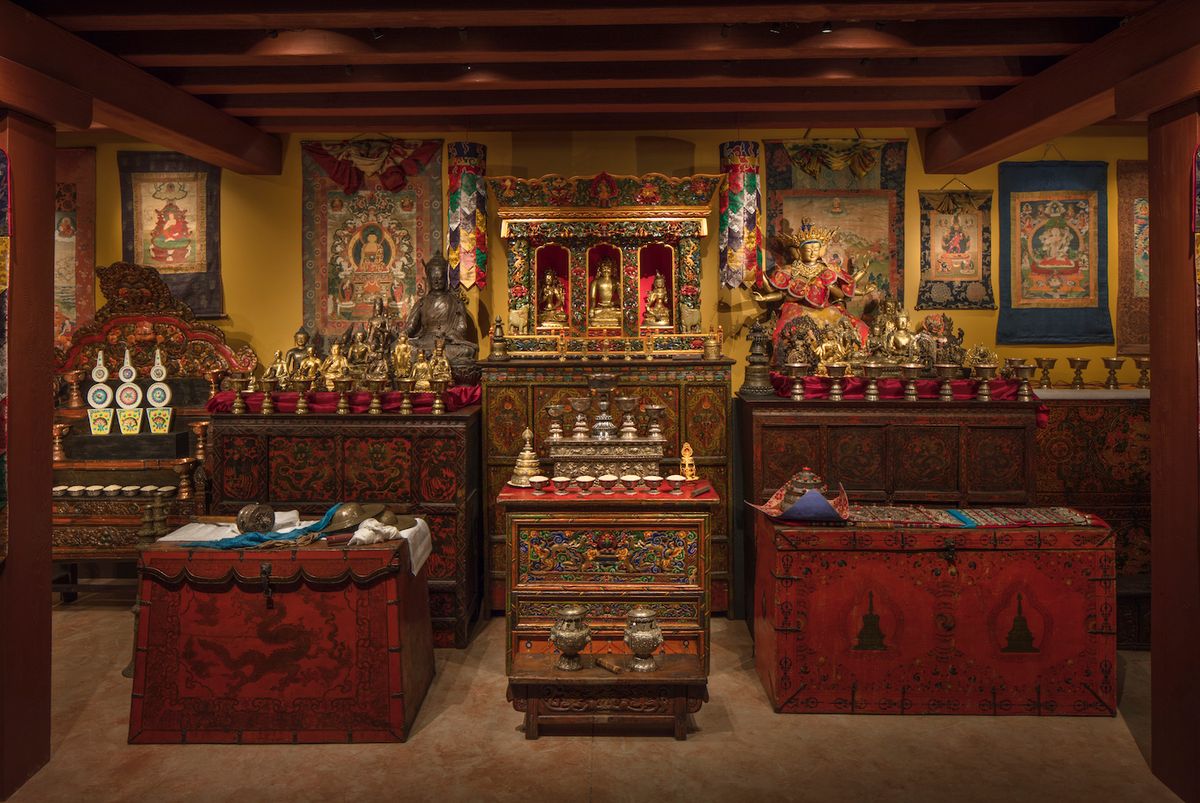The Rubin Museum of Art’s Tibetan Buddhist Shrine Room, an oasis of calm in a typically bustling New York City, is now accessible online to “offer a glimpse of the transformative power of these objects [by] bringing the meditative art and sounds of the room into people’s homes”, says Jorrit Britschgi, the museum’s executive director. The immersive installation, a visitor favourite that reimagines an exceptional Tibetan household shrine with artefacts from the museum’s collection, is available as a two-hour stream complete with flickering dharma lamps and ruminative chanting by Buddhist monks and nuns. The collection of devotional objects, including vajras and bells, ritual mandalas and other objects dating from the 14th to the 18th centuries, conveys stories of tantric Buddhist teachings of perseverance and tranquility. The room is a “space for reflection and contemplation amidst the chaos of the world, and such spaces are needed now more than ever”, Britschgi says. “Himalayan art contains powerful tools for shifting perspectives, which can help us navigate our lives, especially in moments of crisis. Whether you know anything about the art or not, it can be a source of calm and well-being: it’s an invitation to slow down, get quiet, rediscover the nature of time and, in the process, perhaps learn something about yourself.” There is also an audio tour explaining the spiritual significance of the shrine’s contents with the curator Elena Pakhoutova.
Diaryblog
A moment of zen: Rubin Museum's Tibetan Buddhist shrine room goes digital
23 March 2020

The Rubin Museum of Art’s Tibetan Buddhist Shrine Room The Rubin Museum of Art

